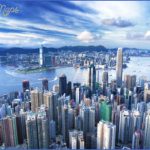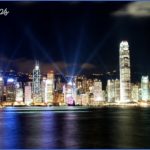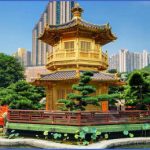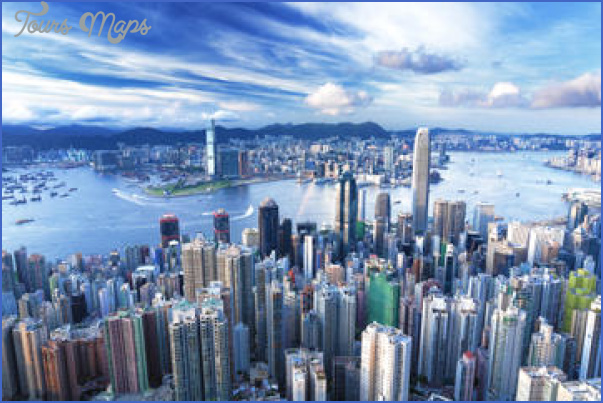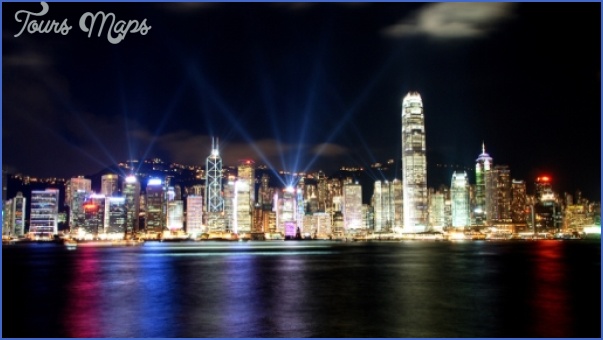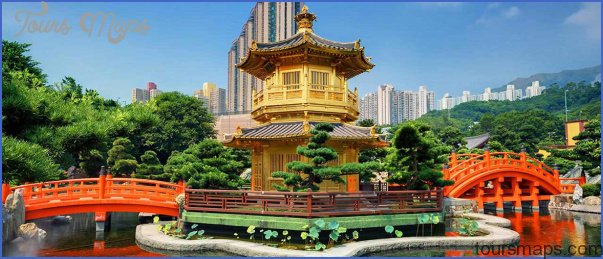The north side of Kowloon Park borders on the district of Yau Ma Tei. This area, which is bounded by Nathan Road to the east, Public Square Street to the north, Temple Street to the west (Chinese night-time market) and Market Street to the south, has four Chinese temples: Tin-Hau Temple, Fook Tak Tse Temple, Shing Wong Temple and Shea Tam Temple. This temple area was established on a different site in 1870, but moved to its present position in 1876 and most recently renovated in 1972. A little way to the west, at the junction of Kansu Street and Reclamation Street, the well-known “Jade Market” is held every day. By day a trip can be taken by sampan through the typhoon-protected harbour known as Yaumati Typhoon Shelter and the life of the boat-dwellers, known as the “Water People”, can be seen at close quarters.
Nathan Road leads from Yau Ma Tei to the shopping area of Mong Kok, where in tiny Hong Lok Street (south of Argyle Street) the Bird Market is held. Anyone who is anxious to buy one of the splendid exotic birds (kakadus, parrots, etc.) on display here, ought to seek advice at the nearby “Kowloon Veterinary Hospital” (9 Tung Fong Street).
Further north-west isthe Lei Cheng Uk tomb, which was discovered in 1955 in the district of Sham Shui Po (41 Tonkin Street) and has been assigned to the latter part of the Han dynasty (a.d. 25-220). The earthenware and bronze objects which have been uncovered are set out in a small museum. The burial site is situated in the middle of a large social housing area.
Right in the very north-west of Kowloon lies the Lai Chi Kok amusement park with the Sung Dynasty Village, completed in 1979, which is a miniature reproduction of a village from the time of the Song dynasty (960-1279). Wooden pavilions, in which “villagers” in period costume demonstrate various types of work, are arranged along the banks of an artificially created river. Besides a herb shop, tavern and shop selling fans there are various traditional craft workshops. Other features include a villa in a rock and flower garden, a wax figure museum, a temple and a restaurant, the food of which is prepared using traditional old Song recipes. Occasionally special events are held, such as wedding ceremonies, folk-dancing demonstrations, kung-fu exhibitions, performances by trained monkeys and court displays.
In terms of area, the mainly mountainous New Territories form by far the Situation and largest part of the colony of Hong Kong. In the north they stretch from Territory Kowloon as far as the Chinese border, while also extending far to the east and west (here fringed by numerous bays and coves). In addition – apart from the main island of Hong Kong and Stonecutters Island -the numerous outlying islands, including the largest, Lantau Island, also come under the administrative jurisdiction of the New Territories.
About 10km/6 miles north of Victoria Harbour, which separates Kowloon Satellite town from Hong Kong Island, lies the new satellite town of ShaTin, in which it is ShaTin anticipated that some 500,000 people will eventually live. The quickest way to reach Sha Tin is to take the train from Hung Horn Railway Terminal in Kowloon.
The most important place of interest at Sha Tin is the Temple of 10,000 Buddhas, which stands at an altitude of 320m/1050ft and can only be reached by climbing a steep flight of steps. The temple complex is on two levels – the principal temple on the lower level and the second temple, consisting of four separate structures, on the upper. The principal temple of
10,000 Buddhas (there are now in fact over 12,800 figures) was begun in 1950 and is dedicated to its founder, Kuan Yin, who died in 1965 (his embalmed body is preserved in the Buddha posture and visible behind glass). In the forecourt there is a nine-storey pagoda.
Another attraction in Sha Tin is the Art Gallery of the Institute of Chinese Studies, the art gallery ofthe Chinese university, which has valuable collections (paintings, calligraphy, seals, etc.) from different periods of Chinese history. In 1978 the Royal Hong Kong Jockey Club opened a second racecourse in Sha Tin (the first is at Happy Valley on Hong Kong Island) and races are regularly held here at weekends. Towering up to the south of Sha Tin is the highly distinctive Amah Rock, whose shape suggests a woman carrying a child on her back.
Hong Kong Vacations Photo Gallery
Maybe You Like Them Too
- The Best Cities To Visit in The World
- World’s 10 Best Places To Visit
- Coolest Countries in the World to Visit
- Travel to Santorini, Greece
- Map of Barbados – Holiday in Barbados

